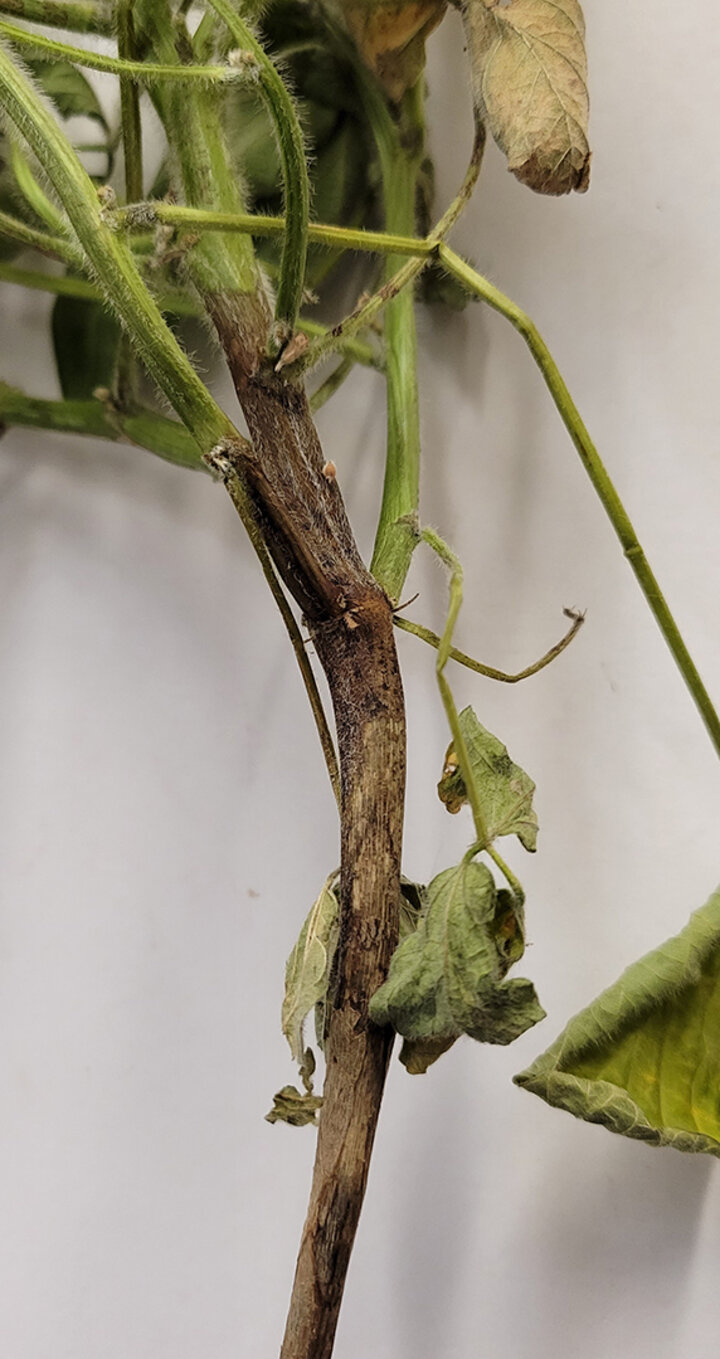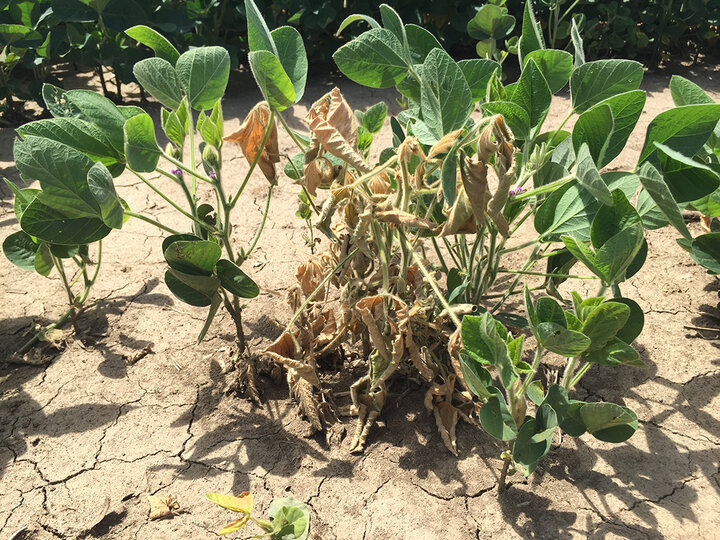Phytophthora root and stem rot (PRSR) is developing in Nebraska soybean fields that have received rain in recent weeks. The UNL Plant and Pest Diagnostic Clinic has recently received several samples from south-central and eastern Nebraska counties.

This pathogen often causes pre- or post-emergence damping off during the seedling stage. However, the symptoms we generally see this time of year are infected surviving seedlings that exhibit water-soaked lesions on the stems and roots, and yellowing and wilting of the leaves. The stem rot phase is easily identified by the dark brown color on the exterior surface of the stem and lower branches (Figure 1). Discoloration of the stem extends from below the soil to six inches or more above the soil line. The taproot turns dark brown, and the entire root system may be rotted. Leaves on older infected plants become chlorotic between the veins followed by general wilting and death (Figure 2). These symptoms can, in some cases, look like plants that have been infected by soybean gall midge, without the presence of the orange larvae.
Disease development will be most rapid in low areas of the field that are poorly drained or where compacted soils are present. Disease can also occur in well-drained fields during growing seasons with excessive moisture. The field history of these areas should be noted for future management decisions as the “resting” spores can survive for many years in the soil or crop debris.
The most effective way to manage PRSR is the use of resistant varieties with high tolerance scores. Soybean varieties which contain resistance to specific races the pathogen are listed as containing “Rps” (Resistance to Phytophthora sojae) genes. Partial resistance, also called field resistance or tolerance, may become infected with PRSR but symptoms will be less severe. A combination of good partial resistance and Rps genes is recommended when possible, especially in areas that may contain a diverse population of races.
Seed treatments are also beneficial. In fields where a seed treatment fungicide was used and seedling disease is still developing, it can be the result of the wrong treatment or excessive moisture leading to product failure under extreme conditions. The most common example of a product rate issue is when mefenoxam or metalaxyl is put on at a rate too low for good Phytophthora control.

A correct diagnosis and good field history are key for selecting the correct varieties and seed treatments. More disease identification and management information can be found in Management of Phytophthora Root and Stem Rot of Soybeans" (NebGuide G1785) and in the Soybean Plant Disease section of CropWatch. For more assistance identifying diseases of crop plants, you can submit a sample(s) to the UNL Plant and Pest Diagnostic Clinic. Instructions and the sample submission form can be found here.
